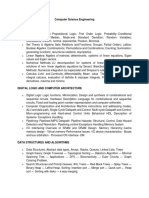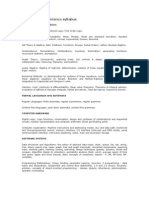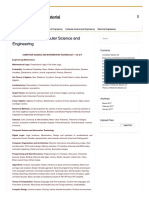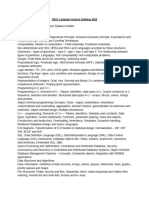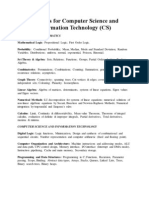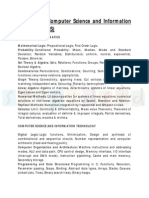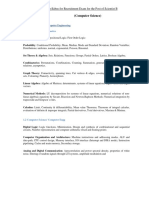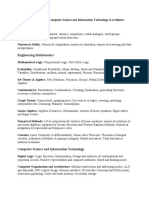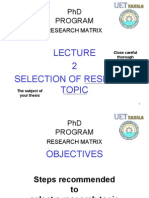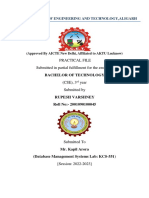0% found this document useful (0 votes)
293 views5 pagesBTech CSE Detailed Notes
The document provides comprehensive notes on various topics in computer science, including programming languages, data structures, algorithms, discrete math, computer architecture, operating systems, databases, computer networks, software engineering, and advanced topics like AI and cloud computing. It covers essential concepts such as memory management, algorithm design techniques, and software development life cycles. Additionally, it discusses security measures in cyber security and the principles of embedded systems.
Uploaded by
lloyedmusindo2Copyright
© © All Rights Reserved
We take content rights seriously. If you suspect this is your content, claim it here.
Available Formats
Download as DOCX, PDF, TXT or read online on Scribd
0% found this document useful (0 votes)
293 views5 pagesBTech CSE Detailed Notes
The document provides comprehensive notes on various topics in computer science, including programming languages, data structures, algorithms, discrete math, computer architecture, operating systems, databases, computer networks, software engineering, and advanced topics like AI and cloud computing. It covers essential concepts such as memory management, algorithm design techniques, and software development life cycles. Additionally, it discusses security measures in cyber security and the principles of embedded systems.
Uploaded by
lloyedmusindo2Copyright
© © All Rights Reserved
We take content rights seriously. If you suspect this is your content, claim it here.
Available Formats
Download as DOCX, PDF, TXT or read online on Scribd
/ 5





